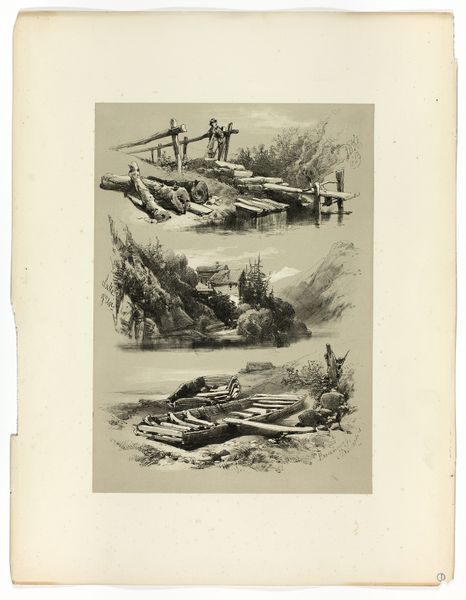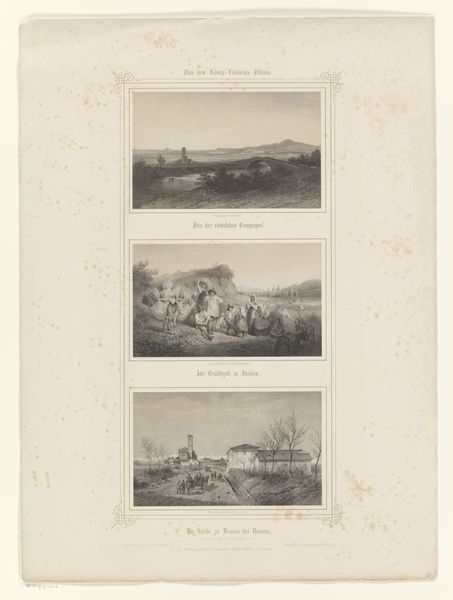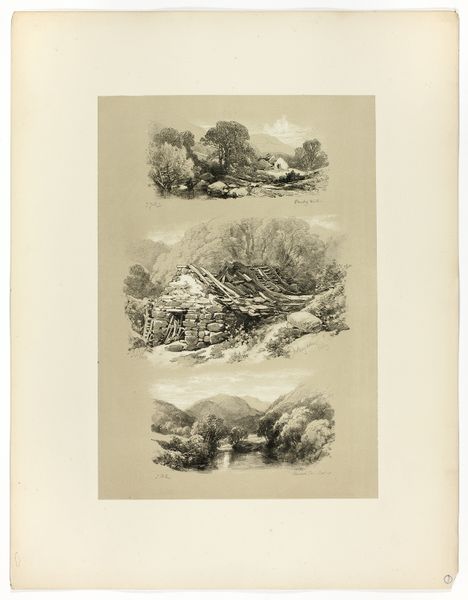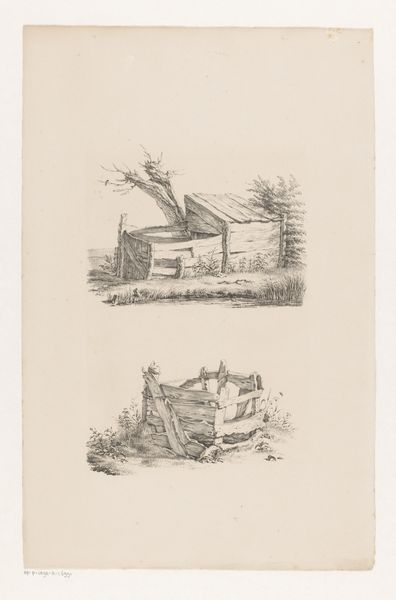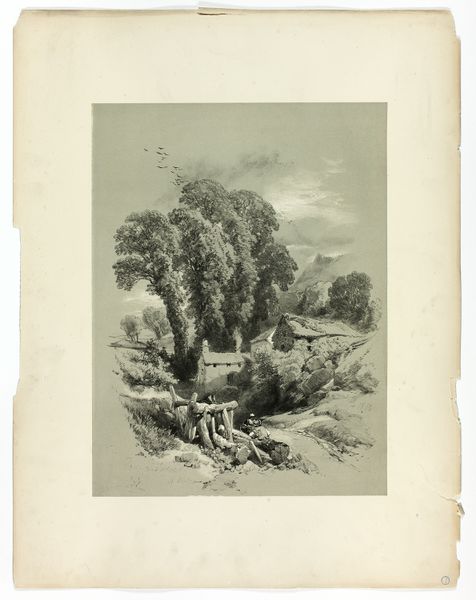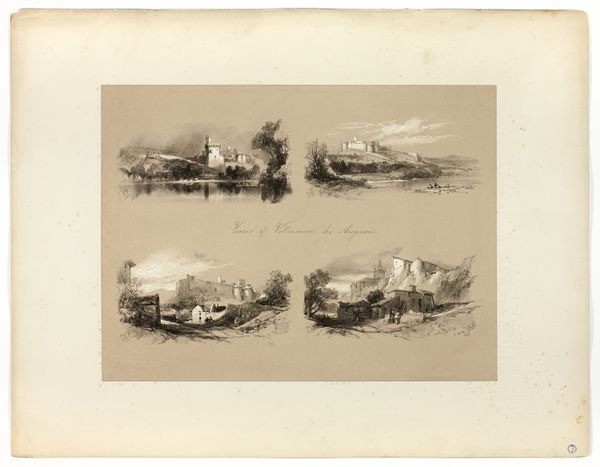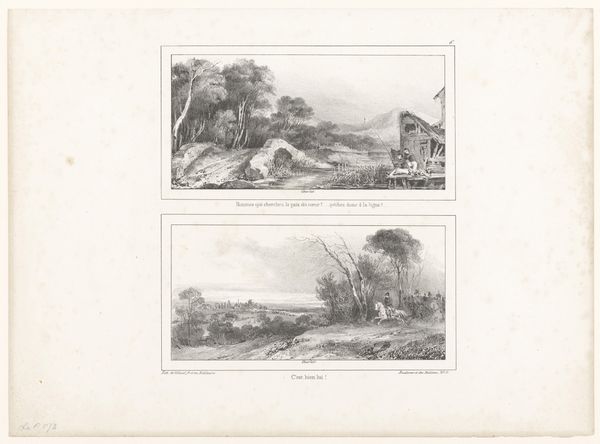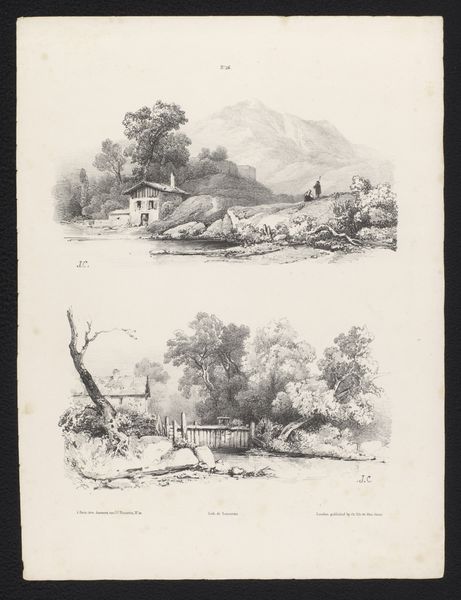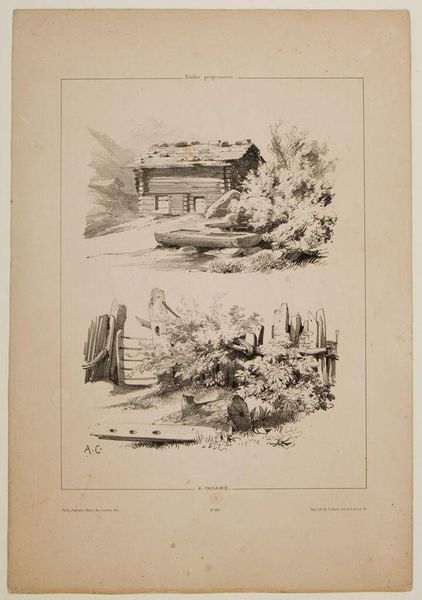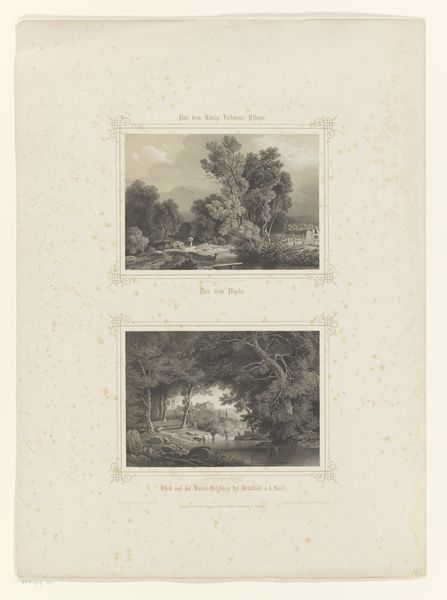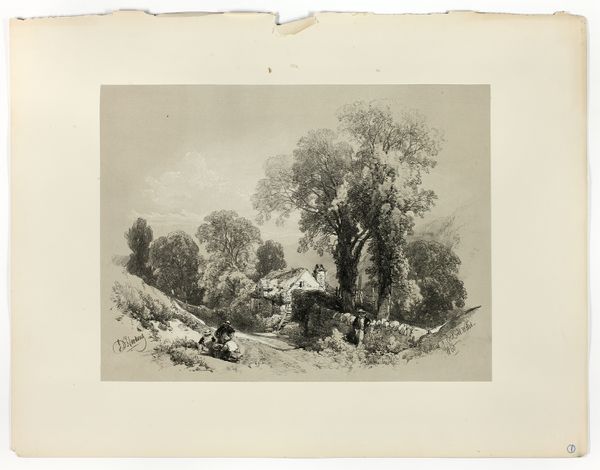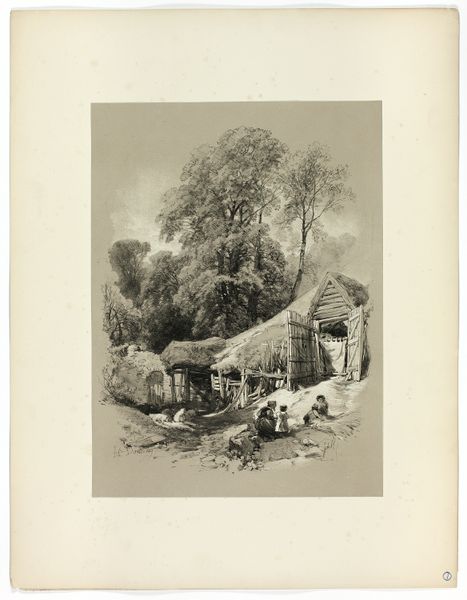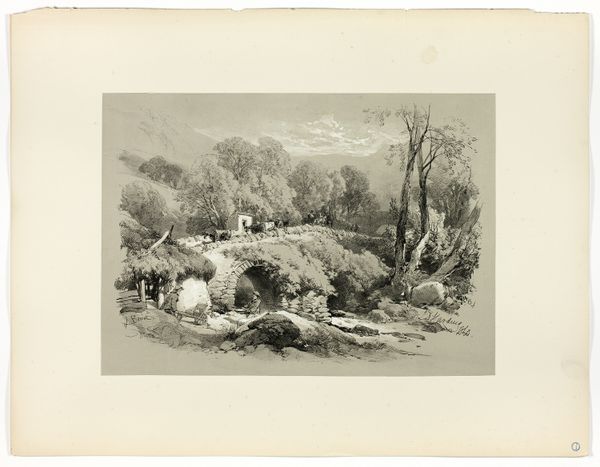
Mumbles, from Picturesque Selections c. 1859 - 1860
0:00
0:00
Dimensions: 372 × 286 mm (image, primary support); 560 × 430 mm (secondary support)
Copyright: Public Domain
James Duffield Harding created "Mumbles, from Picturesque Selections" using lithography, a printmaking process allowing artists to create multiple original images. Lithography involves drawing on a flat stone or metal plate with a greasy substance, then treating it to accept ink only where the drawing is. The lithographic process lends itself well to capturing the textures and tones of the landscapes depicted in "Mumbles". The finished print, in this case, required the skilled labor of the artist, stone preparer, and printer, each playing a crucial role in bringing Harding's vision to life. The picturesque aesthetic captured here romanticizes the landscape, focusing on its aesthetic qualities rather than the realities of labor and industry that shaped it. The image prompts us to consider how artistic representations can both reveal and conceal the social and economic forces at play in a particular time and place. Appreciating the technical skill and labor-intensive processes involved challenges the traditional separation of art from craft.
Comments
No comments
Be the first to comment and join the conversation on the ultimate creative platform.
